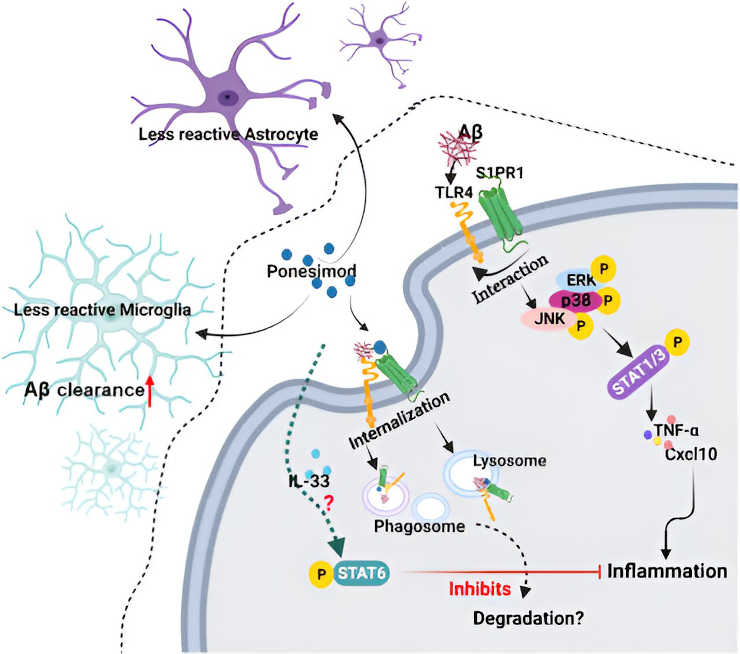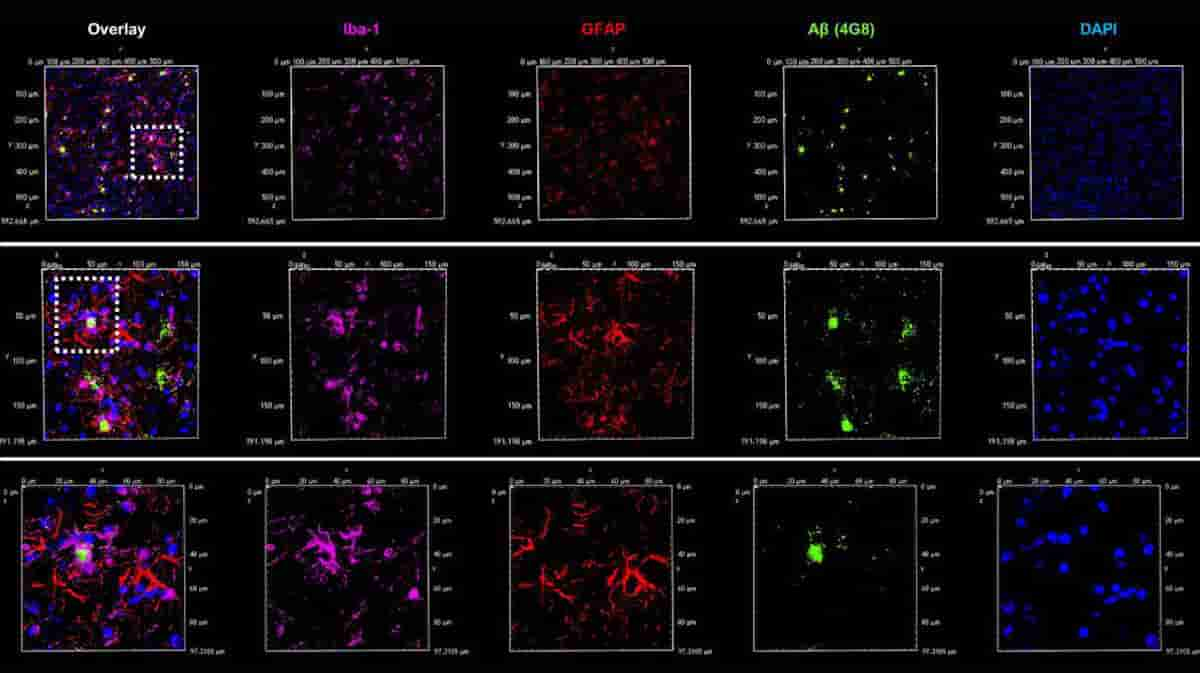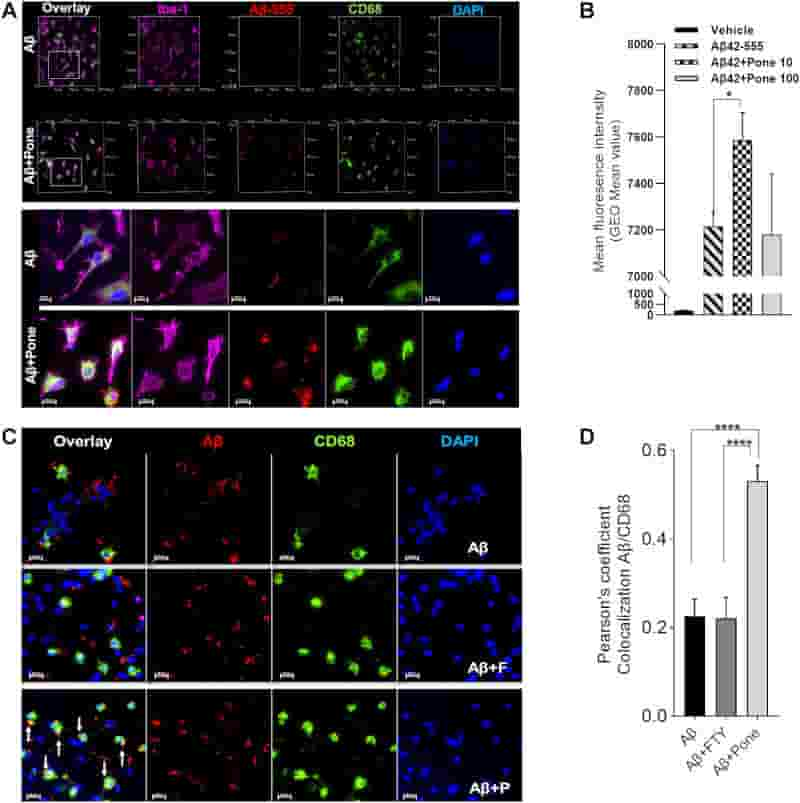A multiple sclerosis medication is potentially effective as a treatment for Alzheimer’s disease, according to a team of researchers from the University of Kentucky. The researchers investigated ponesimod, an oral medicine licensed by the Food and Drug Administration (FDA) to treat relapsing types of multiple sclerosis (MS).
Ponesimod, sold under the brand name Ponvory, was approved for medical use in the United States and the European Union in 2021, The medication reduces inflammation in the brain by blocking the sphingosine-1-phosphate receptor. This mechanism prevents lymphocytes (a type of white blood cell) from leaving lymph nodes.
“We stand at the threshold of a critical endeavor to develop new treatment strategies against Alzheimer’s disease,”
said Erhard Bieberich, Ph.D., a professor in the Department of Physiology in the UK College of Medicine.
Ponesimod Available for Use
Alzheimer’s disease is a brain illness that is progressive and irreversible. The condition, which affects cognitive function, memory, and behaviour, is believed to afflict 6.2 million Americans aged 65 and older. Neuroinflammation is one of Alzheimer’s hallmarks.
“We are the first to show that ponesimod is effective in a mouse model for Alzheimer’s disease. Since this drug is already in clinical use for therapy of relapsing multiple sclerosis, it is immediately available to be used in Alzheimer’s disease therapy as well,”
said Bieberich.

Aβ42 binds to TLR4 and induces a complex with S1PR1. S1P co-activates the downstream pro-inflammatory cell signaling pathways ERK, p38 MAPK and JNK, which leads to phosphorylation activation of the transcription factors Stat1/3 and induction of neuroinflammation, particularly via gene expression of TNF-α. Ponesimod blocks S1P mediated co-activation of TLR4 and instead, leads to phagocytosis and proteolytic degradation of the receptor complex and Aβ42. In addition to inhibition of the canonical cell signaling for neuroinflammation downstream of TLR4, ponesimod upregulates microglial phagocytosis via IL-33/Stat6 in a non-canonical cell signaling pathway, thereby contributing to persistent clearance of Aβ and alleviation of AD pathology. Generated using Biorender.
Credit: eBioMedicine (2023). DOI: 10.1016/j.ebiom.2023.104713 CC-BY
The UK researchers focused on microglia, a type of cell present in the central nervous system. In human bodies, microglial cells perform a variety of activities, including controlling inflammatory responses in the central nervous system (brain and spinal cord).
Reprogramming Microglia
Alzheimer’s disease is characterized by the accumulation of senile plaques and neurofibrillary tangles, which are primarily composed of amyloid beta peptide and microtubule-associated protein tau.
Dysfunctional microglia are linked to neurodegenerative disorders like Alzheimer’s since they help clear away the aberrant protein aggregates in the brain. These buildups impede communication between nerve cells in the brain, causing them to die off.
“The clearance of those proteins is an important target for Alzheimer’s disease therapy. In our study, we reprogrammed microglia into neuron-protective cells that clean up toxic proteins in the brain, reduce Alzheimer’s neuroinflammatory pathology, and improve memory in the mouse model,”
said first author Zhihui Zhu, Ph.D., one of the scientists in Bieberich’s lab.
Improves Attention and Memory
Researchers tested mice with special genetic strains that express the primary symptoms of Alzheimer’s disease in their brains as part of the project.
They administered ponesimod to half of the mice and assessed particular cell activity in the brain. A maze behaviour test was also used to assess the mice’s spatial memory.
“That specific test is a measure of the spontaneous tendency of the mice to alternate their free choices to enter the two arms of the maze,”
said Zhu.
The results show that ponesimod improves attention and working memory in mice with advanced Alzheimer’s pathology.
The University of Kentucky’s Alzheimer’s Disease Research Center also collaborated to gather human brain samples for research. The results of those studies were consistent, indicating that ponesimod might be employed as a medication for Alzheimer’s.
The study provides strong experimental evidence that Ponesimod may be a therapeutic drug that not only reduces neuroinflammation but also improves microglial phagocytosis and amyloid clearance in middle and late-stage Alzheimer’s disease.
Reference:
- Zhu, Z., Zhang, L., Elsherbini, A., Crivelli, S. M., Tripathi, P., Harper, C., Quadri, Z., Spassieva, S. D., & Bieberich, E. (2023). The S1P receptor 1 antagonist Ponesimod reduces TLR4-induced neuroinflammation and increases Aβ clearance in 5XFAD mice. EBioMedicine, 94, 104713.
Last Updated on November 11, 2023

